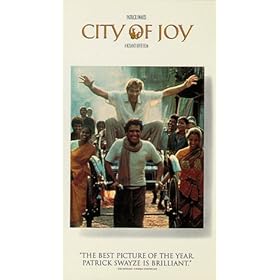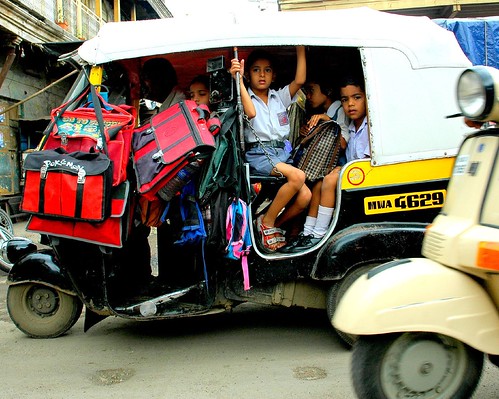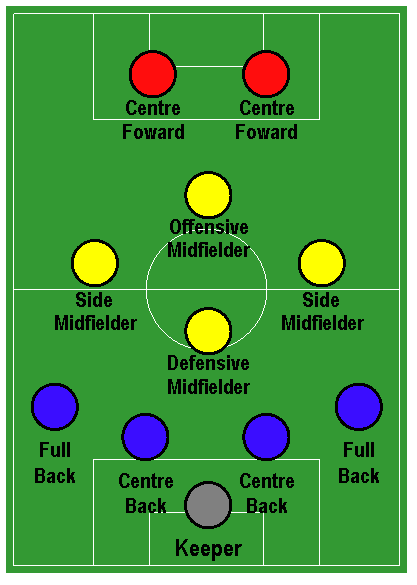Part TWO - 15 Down-moments
Part THREE - 15 Down-moments
16. Bantala - 1989
Three women social workers were raped, tortured and murdered after being dragged from their white Ambassador allegedly by local CPI(M) supporters. Jyoti Basu, then CM, comments the next day - "Erokom to hoyei thake!" ('This is not an unusual event!). One of the reasons he was not in the "Up" list.
Translated part from Suman Chatterjee's song on the event -
Manhood now makes me shameful .
Before myself I hang my head.
The blood of the three women sits -
In our conscience, still and dead.
17. Behala Oil Tragedy - 1987 - A disaster to happen
"In 1987, more than 1600 people had fallen ill seriously and 18 died after consuming food cooked in rapeseed oil sold by a ration shop in Calcutta’s Behala area. The poison responsible for this tragedy was triorthocresyl phosphate (TCP), which is used as a plasticiser in the plastic industry. TCP was mixed with the oil to give it the flavour of mustard oil."

This was not an isolated incident. 4 out of 5 food testing laboratories in the state have shut down, and there are only about 30 full-time food inspectors responsible for collecting food samples for over 65 million people - most of whom regularly eat outside. An estimated 1,04,000 street food vendors serve in Calcutta alone. Your guess on how many of them follow good hygiene is as good as mine!
For example, a dangerous coloring substance (Metanil Yellow) - to be used in textiles industry - is regularly used in street biryanis to replace more expensive saffron. Percentage of Calcuttans regularly eating street food? 33! To not end this on a sour note, Rs 1 (about $0.03) can buy about 200 calories on street and there's not much evidence of heavy metal contamination!
18. D.C. Vinod Mehta chopped to death at Gardenreach - 1984
A daring 35 year old Deputy Commissioner (Port) was viciously led to a blind alley and was chopped to death. His bodyguards were not spared either. Investigations reveal Mehta was on the verge of cracking a big nexus running narcotics business in Port of Calcutta area. 21 years later, a person wanted for the murder was eventually caught for passing secret information to ISI, Pakistan.
19. "Abar Aranye" - 2003
 Goutam Ghose not only ruined memories of the original "Aranyer Dinratri", but made a very bad movie overall. What was an uncomplicated story-telling based on four friends who escaped from Calcutta in the original became a harangue on issues ranging from World Trade Center bombing to the organic drag in the relationship of a couple over the years. Battling with Cancer that would eventually cost his life, Samit Bhanja, however, gave a spirited last performance to an otherwise sad-opposite-of-his-prime Soumitro Chattopadhyay, very nagging Sharmila Tagore and still-adolescent-at-35 character of Tabu!
Goutam Ghose not only ruined memories of the original "Aranyer Dinratri", but made a very bad movie overall. What was an uncomplicated story-telling based on four friends who escaped from Calcutta in the original became a harangue on issues ranging from World Trade Center bombing to the organic drag in the relationship of a couple over the years. Battling with Cancer that would eventually cost his life, Samit Bhanja, however, gave a spirited last performance to an otherwise sad-opposite-of-his-prime Soumitro Chattopadhyay, very nagging Sharmila Tagore and still-adolescent-at-35 character of Tabu!20. "Songbad Protidin" - 1992

Cornered by a leftist Aajkaal, a strongly anti-CPI(M) Bartaman and an opportunist though highly readable Anandabazar -- Tutu Basu's newspaper venture has been a pathetic failure. Interestingly, this was the first Bengali newspaper on the internet and even tried to come up with a replica e-paper, but failed there too.
21. Chandan Basu -
Other than the terribly insensitive comment after the Bantala incident, Chandan is the reason Jyoti Basu did not get into the "Up" list despite meeting all other prerequisites for an icon. Chandan and his not so illustrious friends have always been linked at scandals ranging from a biscuit company; borrowing Rs 2 crores from SBI and never pay it back; prime land allocation near Park Street, "importing" a SUV at half-a-price, to getting into a Medical college at his father's rival Siddhartha Shankar Roy's recommendation (repeatedly mentioned by a cherishing Manuda!).
22. Dominique La'pierre writes City of Joy - 1985
 Member of Parliament Nargis Dutt once accused Satyajit Ray of selling Indian poverty abroad. This accusation smugly fits "City of Joy" - a "classic" woven around a hand-rickshaw puller's struggle in this 'cruel' city. Most disagreed with the way our city was portrayed in the novel. The contention was not poverty, but the ruthless, inhuman face of the city portrayed in the book as well as in the film. Calcuttans for once forgot about freedom of expression and protested the shooting of the film. To many reviewers this book was no more than a "Leper Porn".
Member of Parliament Nargis Dutt once accused Satyajit Ray of selling Indian poverty abroad. This accusation smugly fits "City of Joy" - a "classic" woven around a hand-rickshaw puller's struggle in this 'cruel' city. Most disagreed with the way our city was portrayed in the novel. The contention was not poverty, but the ruthless, inhuman face of the city portrayed in the book as well as in the film. Calcuttans for once forgot about freedom of expression and protested the shooting of the film. To many reviewers this book was no more than a "Leper Porn".Very soon, however, the irony of the name was lost and "City of Joy" found its name in the glossy touristy coffee table books on Calcutta.
23. Diamond Harbor -

It is said Diamond Harbor was responsible for three out of four unwanted pregnancies in the later part of the last century. A naturally beautiful place - River Hooghly just about meets the ocean here - that lost its charm to the seediness of the local rent-by-hour hotels and the daytime activities of drunk, single, twenty-somethings from nearby Calcutta by the riverside.
24. B.T. Road -
Suffice to say this is arguably India's most congested road.
25. Govt Hospitals -
Only thing worse than driving on B.T.Road would be to drive on B.T.Road to go to a government hospital. Some of the reasons these hospitals were in News recently -
- 22 babies die in 3 days in state's premier children's hospital
- Newborn and mother die of torture at State Hospital
- Woman dies at state hospital after ants eat her eye!
- Flesh trade peaks at Govt run city hospital
- Pregnant woman left alone in labor room for 12 hours - delivers stillborn
26. Auto-rickshaws -
 At least 70% of Calcutta residents suffer from some respiratory disorder. It also has the highest rate of lung cancer across all cities in the world. Reason - Calcutta's average SPM (Suspended Particulate Matter) is at least 50% more than what it should be. The biggest culprit is the 50,000 plus (most unregistered) auto-rickshaws that use "kantatel" -- an environmentally lethal mix of kerosene and petrol.
At least 70% of Calcutta residents suffer from some respiratory disorder. It also has the highest rate of lung cancer across all cities in the world. Reason - Calcutta's average SPM (Suspended Particulate Matter) is at least 50% more than what it should be. The biggest culprit is the 50,000 plus (most unregistered) auto-rickshaws that use "kantatel" -- an environmentally lethal mix of kerosene and petrol.For Calcutta's environment to survive auto-rickshaws must die!
27. Subhas Chakraborty -
 Enfant terrible of the Left Front Govt, the transportation minister himself is responsible for the unauthorized Auto-rickshaws and for the fact that less than 50% of the vehicles in the state would pass the emission test. He takes pride in knowing his Rabindranath, and his Lenin, and his army of folks like "Hatkata Dilip" (Hands-cut-off Dilip).
Enfant terrible of the Left Front Govt, the transportation minister himself is responsible for the unauthorized Auto-rickshaws and for the fact that less than 50% of the vehicles in the state would pass the emission test. He takes pride in knowing his Rabindranath, and his Lenin, and his army of folks like "Hatkata Dilip" (Hands-cut-off Dilip).When he opens his mouth he is unintentionally comical. Almost borrowing the legacy of Bill Clinton he defended his act of offering prayers(he's a communist, not supposed to believe in God) at Tarapeeth by claiming he just threw flowers at the idol and did not say anything religious. Had he been managing some inconsequential portfolio he could even be a pleasure to look at - in a Circus Clown sort of way.
28. "Balak Brahmachari" enters samadhi - 1993

Sri Sri Thakur's died of heart failure at a ripe age of 73, but his dead body was kept in Sukhchor ashram for 70 days when his followers - Santan Dal- eagerly waited for him to re-emerge. To the disciples it was just a "deep trance" that the Thakur had apparently gone into before and re-emerged after several weeks. Police had to forcefully take the rotting body out to cremate. Baba did not mind.
Fourteen intermediate years seem to do nothing to the unwavering faith of the sect. They took out a huge rally last year prophesying Netaji would return alive in 2007, accompanied by the Baba.
29. "Diamond Dutta" - 1997

Always a maverick, Amal Dutta quit his full-time job in 1960s and became India's first professional soccer coach. His on-field innovations, if not his success record, will always ensure a big place in our football history. Dutta took charge of Mohanbagan in 1997 and created an euphoria as a rejuvenated team displayed one of their finest attacking games and beat Churchill Brothers 6-0 in Fed Cup quarter finals. An all time record crowd of 131,000 flocked to Salt Lake Stadium for the semi-final clash with Dutta's arch-rival P.K.Banerjee's East Bengal. The much publicized "diamond system"(see diagram) was shredded by Bhaichung Bhutia's immaculate hat-trick as Bagan lost it 1-4.
Though Dutta was vindicated when most teams adopted the "diamond formation" in 2002 Euro cup, our club officials were clearly not amused at the big defeat and Dutta had to give up his experimentation soon. Sadly, Amal Dutta's inability to keep his mouth shut also made sure he would never be invited to coach the national team even after a spirited Nehru Cup'88 display under his tutelage.
30. Stoneman - 1989
Our version of Zodiac killer, "Stoneman" thrashed at least 13 homeless and city beggars to death over the summer of 1989. Modus operandi - a heavy slab of concrete was dropped over a sleeping victim's head in dimly lit part of sidewalks of central Calcutta. Conspiracy theories like some bizarre tantrik cult that want a certain number of human sacrifices were in circulation but no one was ever arrested or charged. Stoneman - originally named so by The Statesman - still remains an unsolved mystery with closely repeating patterns in some other major cities. Bombay and Bangalore both had their share of pavement dwellers' serial murders during 1980s too.
3 comments:
Absolutely brilliant.
Even if a few of them had to force entered to make up the 60 number!
Don't you think Coalfield Times should be in the list? Up or down is your call!
And pls pls pls re-post the 'nola' comment. Just because there is a word identification string on my blog does not mean you will delete comments posted!
Thanks! I tried very known "elements" in this list. Now I see at least few that should be there too - "Oh Calcutta", Siddhartha Basu etc.
Coalfield times would be an excellent topic in "Cult Bengali Items" - along with books like "Sada Ami, Kalo Ami" by Runu GuhaNeogy or "Somoy, Osomoy, DuHsomoy" by Arabindo Ghosh.
BTW, the list on my blog is just a translation of a supplement by ABP on this Poila Boishakh.
You have given me full credits for it!
Post a Comment